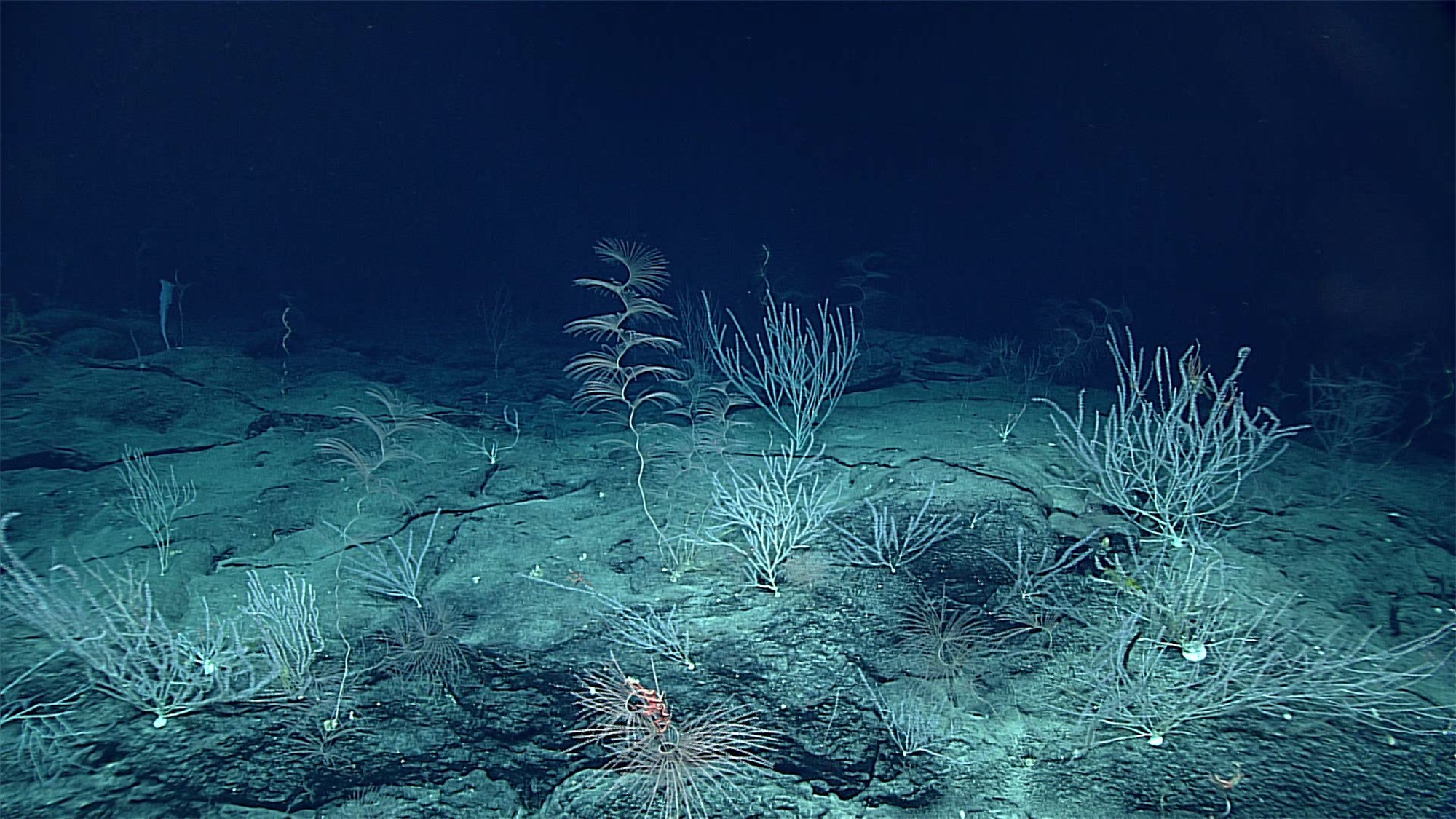

Marine virologists have found a novel virus living in the incredibly deep and dark Mariana Trench, more than 29,000 feet under the ocean’s surface. The virus is the deepest known isolated bacteriophage—viruses that infect and replicate inside bacteria—ever found, according to a study published September 20 in the journal Microbiology Spectrum.
[Related: Meet the marine geologist mapping the deepest point on Earth.]
The enormous trench in the western Pacific Ocean near Guam is over 36,000 feet deep at its lowest depth and is part of the hadal zone. This zone is named for Hades, the Greek god of the underworld, for its deep trenches and high pressures. The buildup of carbon along the base of the hadal zone’s trenches may even help regulate the Earth’s climate and carbon cycle. Even in its intense pressures and extreme cold and darkness, life continues to find a way. Scientists have discovered fish, shrimp, and lots of microbes lurking there. That life includes regulators to keep the living things in check.
“Wherever there’s life, you can bet there are regulators at work. Viruses, in this case,” study co-author and Ocean University of China marine virologist Min Wang said in a statement.
This new phage works by infecting bacteria in the phylum Halomonas, which are commonly found in sediments deep seas and the geyser-like openings on the seafloor that release streams of hot water called hydrothermal vents.
In their study, Wang and an international group of researchers describe the new virus identified as vB_HmeY_H4907. The virus was brought up in sediment from a depth of about 5.5 miles or more than 29,000 feet deep and is classified as a bacteriophage. Also called phage, they infect and replicate inside bacteria and are believed to be the most abundant life forms on Earth.
“To our best knowledge, this is the deepest known isolated phage in the global ocean,” said Wang.
According to Wang, the analysis of the viral genetic material points to the existence of a previously unknown viral family living in the deep ocean and some new insights into the evolution, genetic diversity, genomic features of deep-sea phages and how they interact with their hosts.
Previously, this team has used metagenomic analysis to study the viruses that infect bacteria in the order Oceanospirallales. This order includes Halomonas, the phylum that this newly discovered virus infects. In this new study, the team searched for viruses in bacterial strains isolated by marine virologist Yu-Zhong Zhang, also from the Ocean University of China.
[Reading: A deep sea mining zone in the remote Pacific is also a goldmine of unique species.]
The genomic analysis of the new virus suggests that it has a similar structure to its host and is widely distributed in the ocean. It is also lysogenic, meaning it invades and replicates inside its host, but typically does not kill the bacterial cell. The virus’s genetic material is then copied and passed on as the cells divide.
The discovery points to some new questions focused on the survival strategies that viruses living in harsh and generally secluded environments like the hadal zone trenches use and how they co-evolve with their hosts. Future studies also will aim to investigate the molecular machinery driving interactions between deep-sea viruses and their hosts.
According to Wang, discovering more new viruses in extreme places, “would contribute to broadening our comprehension of the virosphere. Extreme environments offer optimal prospects for unearthing novel viruses.”
